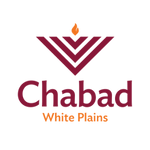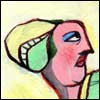What is Shabbat Hagadol
The Shabbat which precedes Passover is called Shabbat haGadol, the Great Sabbath, for many and varied reasons, as we shall explain below.
There are also many special customs associated with this Shabbat. It was in Egypt that Israel celebrated the very first Shabbat Ha-Gadol on the tenth of Nissan, five days before their redemption. On that day, the Children of Israel were given their first commandment which applied only to that Shabbat, but not to future generations: On the tenth day of this month [Nissan]... each man should take a lamb for the household, a lamb for each home (Exodus 12:3).
This mitzvah of preparing a lamb for the Passover offering four days before it was to be brought, applied only to that first Passover in Egypt, and the Torah does not tell us that we must continue to do so before every future Passover. Nevertheless, the people continued to do this to make sure that their lambs had no blemishes which would preclude their being sacrificed.
Many miracles were performed for the Children of Israel on this first Shabbat haGadol. The Torah commanded them to take their lambs and tie them to the bedpost. When they did so, their Egyptian neighbors saw this and asked:
"What is the lamb for?"
The Children of Israel answered: "It is to be slaughtered as a Passover sacrifice as G‑d has commanded us."
The Egyptians, for whom the lamb was a deity, gnashed their teeth in anger but could not utter a sound in protest.
Many other miracles as well were performed in connection with the Passover offering, we therefore refer to this day as Shabbat haGadol.
Why We Celebrate Shabbat Hagadol instead of the 10th of Nissan
Why do we commemorate the miracle on the Shabbat before Passover rather than on the tenth of Nissan, the date on which it actually took place? We see that the Torah itself mentions only the date rather than the day of the week.
It is because the miracle is closely connected to Shabbat. The Egyptians were aware that the Children of Israel observed Shabbat and did not busy themselves tending animals on that day, so when the Egyptians saw them taking lambs and binding them to their bedposts on Shabbat, they were surprised and decided to investigate what was happening.
The Children of Israel were in great danger when they were confronted and were saved only by virtue of a miracle. We therefore commemorate this miracle on Shabbat rather than on the tenth of the month of Nissan.
Moreover, had it not been Shabbat, the Children of Israel would not have needed a miracle to save them. They would have been able to deceive the Egyptians by diverting their attention or making up some kind of explanation. On Shabbat, however, they would not do so, for, as our Sages said, "Even an ignorant man will not tell lies on Shabbat." Thus, we see that they were endangered because of their observance of Shabbat, and they needed a miracle to save them.
A further reason why we recall the miracle on Shabbat rather than on the tenth of the month is that, forty years later, Miriam died on that day and the well which accompanied the Children of Israel and provided them with water in the wilderness, disappeared. When the anniversary of Miriam's death falls on a weekday, some observe it as a fast for the righteous.
Customs of Shabbat Hagadol
- Many communities recite special hymns during the morning services on Shabbat haGadol. The main theme of these hymns is the laws of Passover, which are presented in verse form in order to make it easy for people to become acquainted with the laws of the Festival.
- On the Shabbat preceding Shabbat haGadol, Psalm 104 and Psalms 120-134 [the fifteen psalms that begin with Shir haMa'alot, which are recited every Shabbat throughout the winter] are said for the last time of the year.
- We read part of the Passover Haggadah on Shabbat haGadol, beginning from the paragraph that begins with the words "Avadim hayinu" ("We were slaves") until the words, "lechaper al kol avonotaynu" ("to atone for all of our sins"). One reason for this is that the redemption began on Shabbat haGadol. Another reason is to familiarize the children with the contents of the Haggadah, in fulfillment of the mitzvah of You shall tell your children on that day. Yet another reason is that the reading from the Haggadah on Shabbat haGadol is like a rehersal for the Seder night, and helps us to become more familiar with the text.
- In some Sephardic communities, it is customary, when greeting one another on this Shabbat, to add the title of the day: Shabbat haGadol mevorach, a blessed Shabbat haGadol.
- From as long ago as the days of the Tanna'im and Amora'im, it has been customary in Jewish communities throughout the world for the outstanding Torah scholar of the congregation to address all the people on this Shabbat. The purpose of this address is to teach the people the ways of G‑d and instruct them in the laws of Passover. The rabbi explains how utensils must be prepared for use on Passover, how to remove the chametz, and the laws concerning the baking of matzot. His purpose is to ensure that the people not err in the slightest degree in their observance of the Festival. It is also customary for the rabbi to add other material that speaks to the heart, as well as subjects of topical interest.
- When Shabbat haGadol falls on the day before Passover [and all of the preparations have already been made], it is customary to move this special sermon to the previous Shabbat, so that the congregation can learn all of the applicable laws in time to prepare for the Festival
- It is an ancient custom in some communities, on the day before Shabbat haGadol, to bake a small quantity of bread from the flour which has been reserved for making the matzot. This bread is referred to as the "challah of the poor" or the "synagogue challah," and is distributed to the poor in the community. Each person would fulfill this custom in accordance with his means. The wealthy would prepare a large quantity of this special challah, and those less well off would prepare a smaller quantity.






Join the Discussion